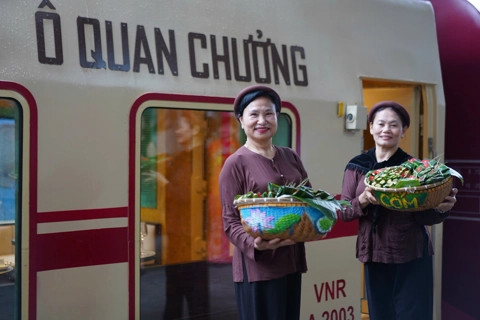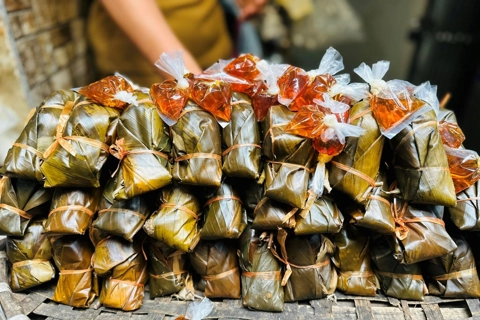Hanoi painter leads a renaissance in Vietnamese silk art
Her silk works are now a valued part of modern Vietnamese artistic heritage.
THE HANOI TIMES — Nearly four decades after her passing (June 6, 1988), the delicate silk paintings of Le Thi Luu continue to shape the soul of Vietnamese art. Her graceful portraits, marked by soft lines, gentle palettes, and timeless depictions of women and children, have become visual echoes in the work of contemporary painters. Her legacy lives not just in museums or auction houses, but in the quiet revival of silk as a medium of personal and cultural expression in Vietnam and abroad.
As the only woman to graduate from the École des Beaux-Arts de l’Indochine (now Vietnam University of Fine Arts) in the early 20th century, Luu forged a distinctive legacy. Her works, rich in Asian sensibility, are celebrated for their gentle, feminine, and deeply expressive qualities.
Beyond her artistic achievements, she played a pivotal role in affirming the place of women in Vietnamese art and inspiring generations of female painters to follow in her footsteps.
Le Thi Luu's delicate and evocative silk paintings, which often portrayed the everyday lives of Vietnamese women and children in the late 19th and early 20th centuries, left a profound impression on art lovers at home and abroad.
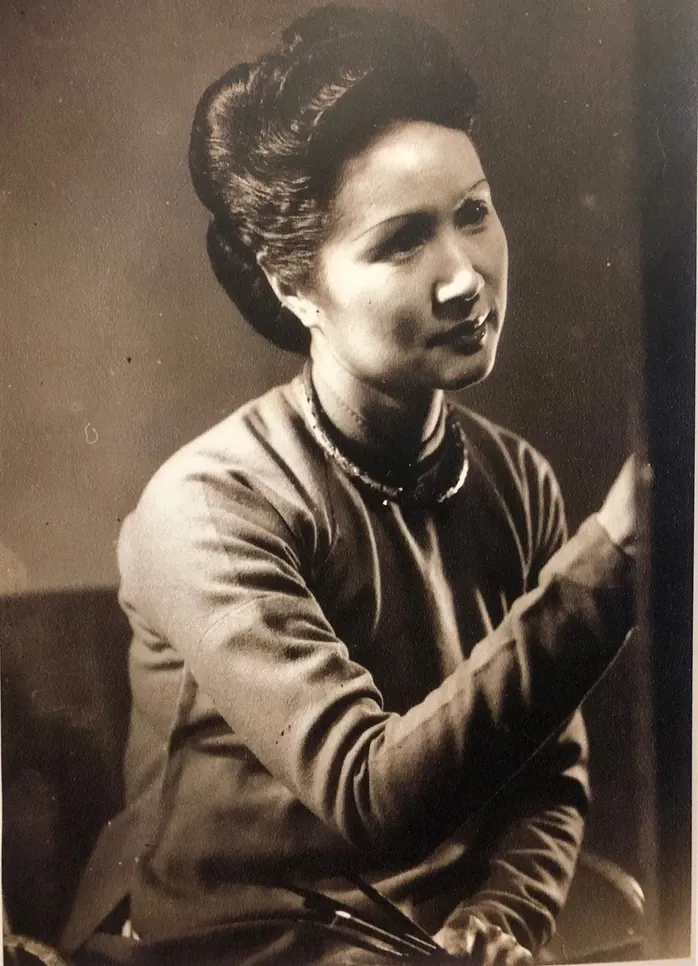
A portrait of artist Le Thi Luu (1911-1988). Photo: Archive
Her artistic legacy lives on through dozens of silk works, which have become cultural treasures and solidified her status as one of Vietnam’s masters of silk painting .
The journey of Vietnamese silk painting
Known as one of the traditional media of Vietnamese painting, silk is highly valued and has become a symbol of delicacy and aesthetic beauty. Many silk paintings are portraits of royalty from the feudal period. These paintings reflect the luxurious lives of the nobility and are considered "national paintings."
Although silk painting in Vietnam is believed to have emerged in the 1930s and undergone various stages of development, the earliest works in this category discovered so far date back to the 18th and 19th centuries. Examples include Chan Dung Nguyen Trai (Portrait of Nguyen Trai), Phung Khac Khoan, and Trinh Dinh Kien, all by an unknown artist. These typical pieces were likely produced by court painters.
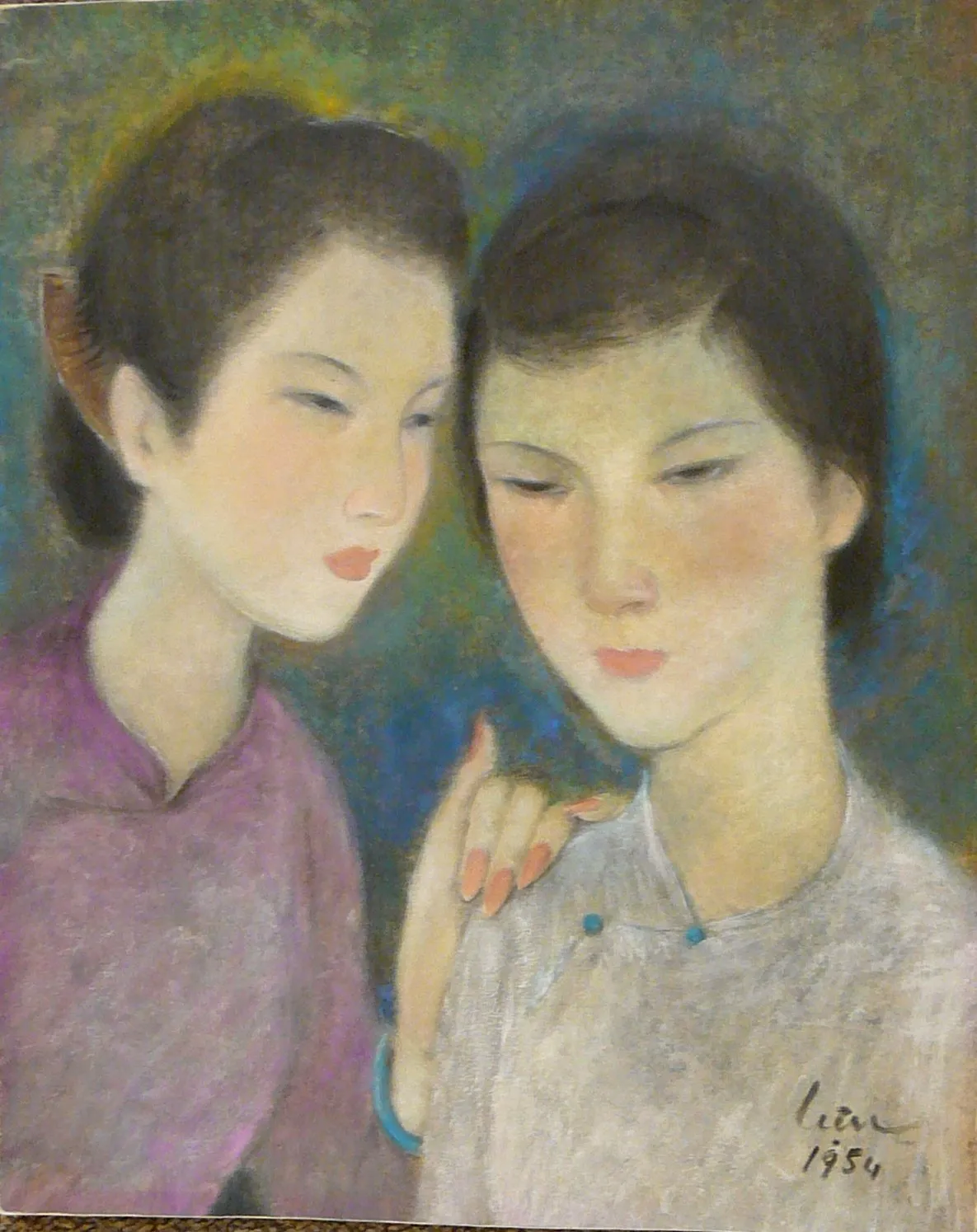
“Nhi Kieu” (The Kieu Sisters) by Le Thi Luu, paper-backed silk painting, 1954.
The year 1925 saw the establishment of the Indochina College of Fine Arts, which ushered in a new era of Vietnamese painting. Silk became a significant medium during this time. Pioneering silk painters included Nguyen Phan Chanh, Le Van De, Luong Xuan Nhi, Tran Van Can, Nguyen Tien Chung, and Mai Trung Thu.
Gifted artist
Le Thi Luu was one of the few women among the predominantly male silk painters and was considered one of the most prominent figures. Born in Tho Khoi Village in Thuan An Canton (now Long Bien District in Hanoi) to a family influenced by French culture, she developed a passion for painting at a young age. She was the first female painter in her primary school.
In 1932, Luu graduated as the valedictorian of the third class from the Indochina College of Fine Arts (now the Vietnam University of Fine Arts). She was then appointed professor at Buoi School and Dong Khanh Girls School in Hanoi, as well as Ao Tim Girls School in Saigon.
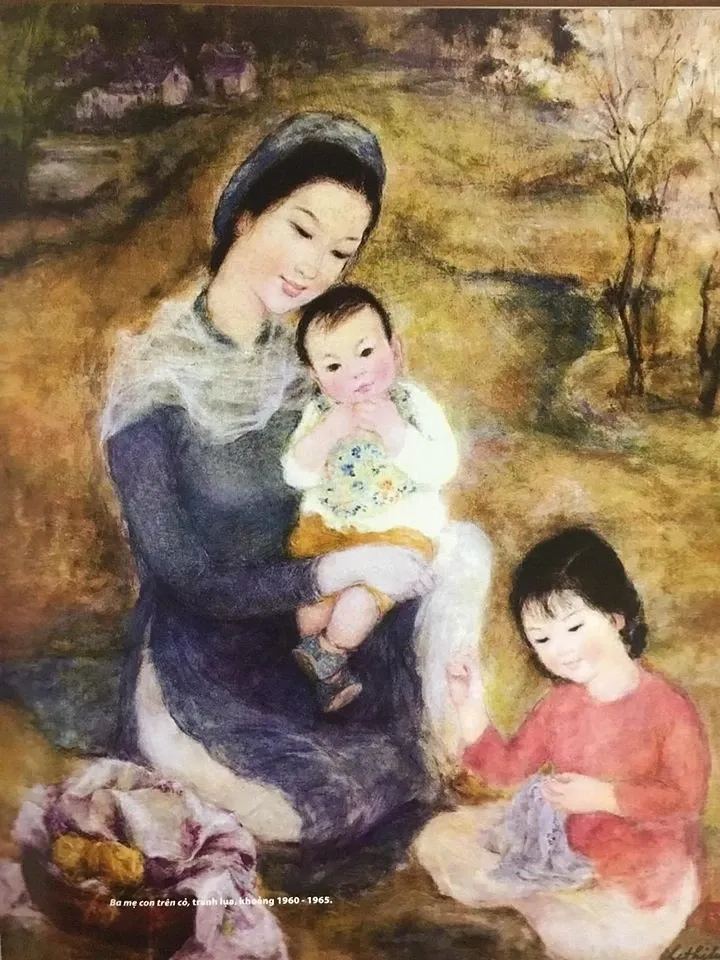
"Mother and Kids on the Grass" 1960-1965.
Initially, she primarily painted people and landscapes in oil before gradually transitioning to silk painting. Meanwhile, artists like Vu Cao Dam and Le Pho took the opposite approach after World War II to achieve greater freedom.
In 1940, Luu and her husband, Ngo The Tan, an agricultural engineer, moved to France. Over the next 15 years, she painted little due to the birth of her only son, the couple’s three-year business trip to Africa, and their involvement in the anti-French revolution. "From her college years until we moved abroad in 1940, she must have created fewer than 100 pieces. While we were in Africa, she painted around 10 pieces. Since she got back to painting, she's done fewer than 400," Ngo The Tan estimated.
Le Thi Luu’s paintings are regarded as cultural symbols imbued with a Vietnamese spirit that exquisitely blend tradition and modernity. According to art critic Thuy Khue, “Luu’s silk paintings exude an expatriate’s love for her homeland and people.”
A lifetime devoted to mastering silk painting
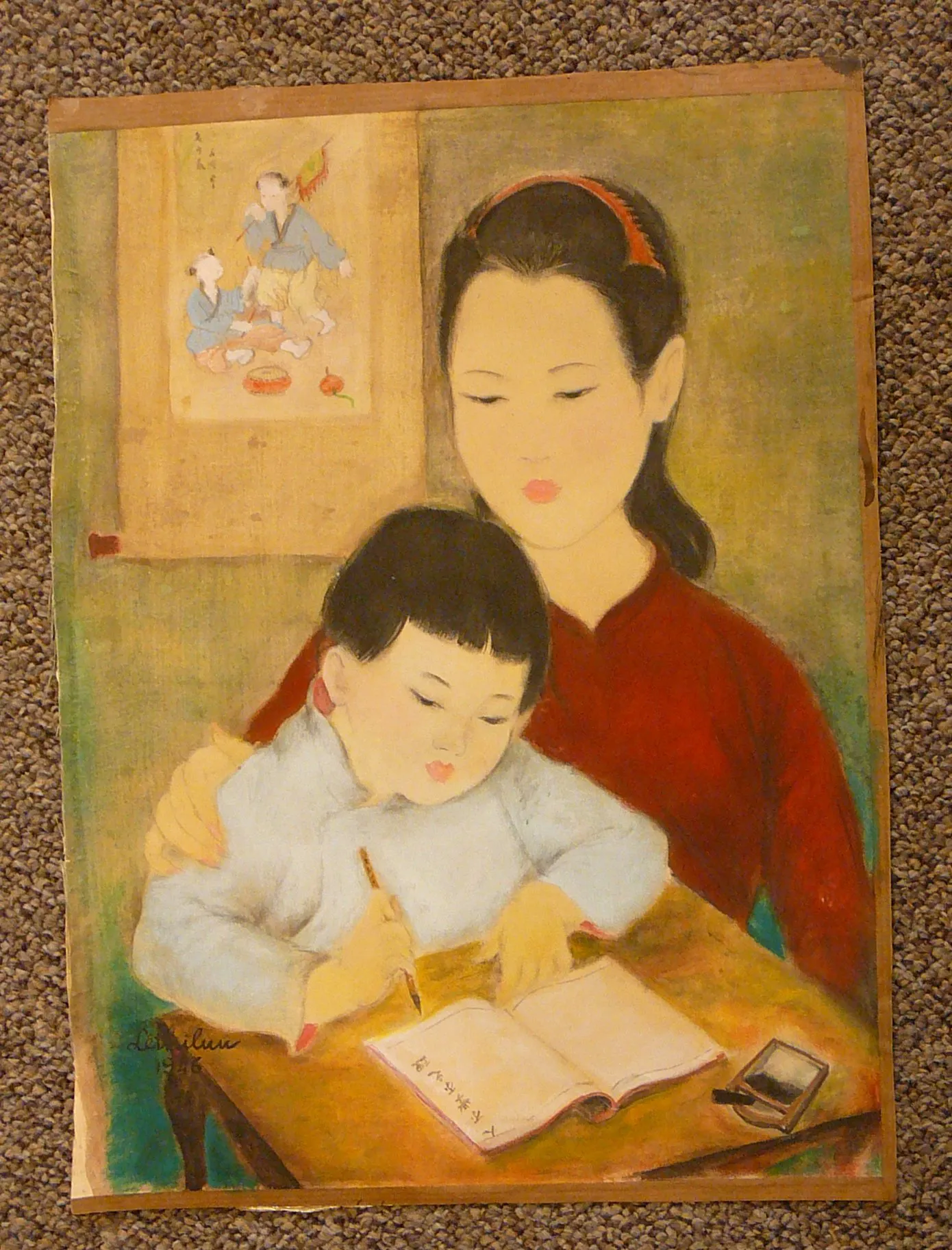
“Chi Day Em Viet Chu Nho” (Older Sister Teaches Younger Sibling Chinese Characters) by Le Thi Luu, 1946.
From 1962 to 1971, Luu taught at Lycée Corot, Lycée Rodin, and Lycée d'Orsay in France and continued to paint until passing away at the age of 77.
In the final years of her life, she completed many remarkable works, leaving a lasting mark on her career. One of her most significant paintings, Kim - Kieu Gap Go (Kim - Kieu Meeting), was the piece on which she worked the longest. She started working on it in 1975 and continued revising it into the 1980s, but she was never fully satisfied with it. Another notable work from this period is "Kieu Playing the Pipa," created around 1987, which depicts a similar theme. Her final painting, Tam Dai Dong Duong (Three Generations Under One Roof), was completed in 1988, shortly before her death.
Le Thi Luu’s paintings were displayed in Paris galleries and sold at Sotheby’s and Christie’s auctions for hundreds of thousands of US dollars each. For example, Me va con (Mère et enfant) was sold at US$573,925 at Sotheby's on April 21, 2022 and Untitled sold with Sotheby's at $373,400 on March 30, 2025. Most of her works remained in Europe until 2018, when her nephew, Le Tat Luyen, and his wife, Thuy Khue, donated their collection of 28 of Luu’s artworks, as well as her poetry drafts and documentary pictures, to the Ho Chi Minh City Museum of Fine Arts.
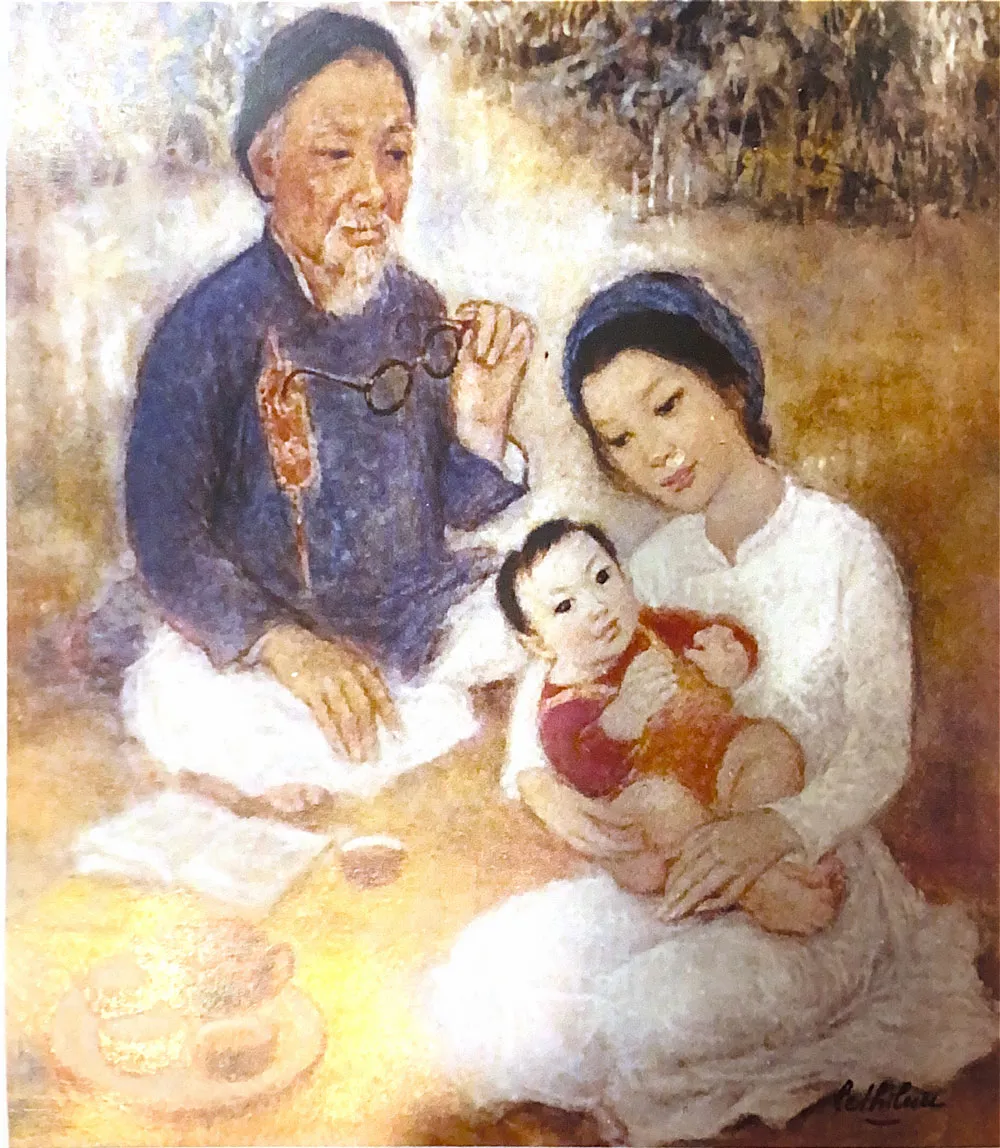
Tam Dai Dong Duong (Three Generations Under One Roof), 1988.
Thuy Khue, an art critic and the author of the book Le Thi Luu: An Tuong Hoang Hon (Le Thi Luu: Impressive Sunset), describes Luu’s paintings as "impressive." The main themes of her paintings center around young subjects: young children, young girls, and young married women. The female subjects are usually depicted with well-proportioned figures, chubby or oval faces, straight noses, heart-shaped lips, lustrous eyes, and thin, arched eyebrows. These features represent the ideal of beauty according to the aesthetic standards of Vietnamese people at that time.
"Le Thi Luu is attached to her country, its villages, and the scenery of her hometown, so she always painted subjects against rural backgrounds. She created the colors based on the layout and requirements of each work," Khue said.
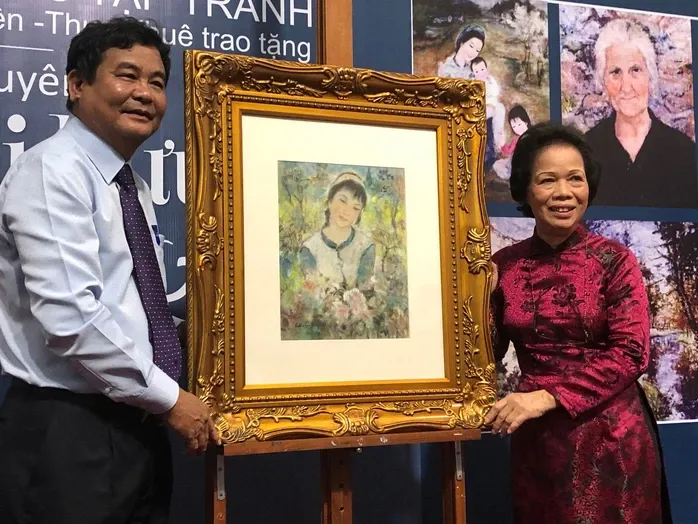
Writer, literary critic, and art collector Le Thuy Khue (right) donated 28 silk paintings by Le Thi Luu to the Ho Chi Minh Museum of Fine Arts in 2018.
The colors in Luu’s works are often brilliant yet harmonious. They have gradual transitions instead of sharp lines on a smooth silk background, which gives viewers a pleasant feeling. The light is usually mellow and sometimes evokes melancholy. Her strong yet graceful style sets her apart from other silk painters. Her techniques are reminiscent of Paul Cézanne's, as her works resemble oil paintings. "The colors in Le Thi Luu’s paintings reflect two spaces and two minds: a French light and a Vietnamese soul," remarked Khue.
Luu was influenced not only by schools such as Impressionism and Classicism but also by her lifelong passion, which she breathed into her works. This earned her a position in the art world, leaving an indelible impression on art lovers.
The 28-painting collection, currently housed by the Ho Chi Minh City Museum of Fine Arts, honors Le Thi Luu’s devotion to art. The collection serves as a valuable resource for future generations to study and build upon, contributing to the preservation and development of Vietnamese fine arts.






